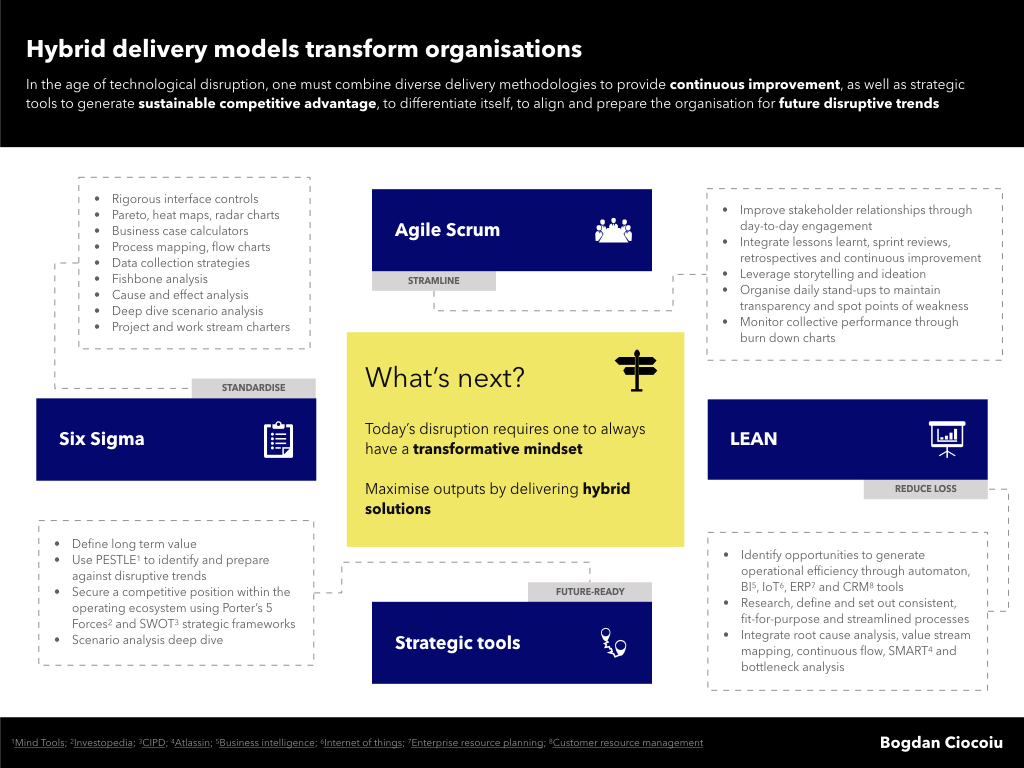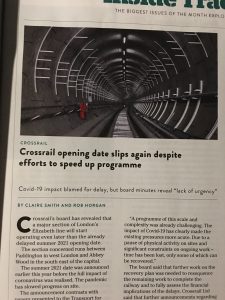The emerging environmental complexities require project teams to consider using hybrid delivery methodologies instead of traditional uniform frameworks. Due to this diverse approach, projects might come across as linear at a high level, but they might demonstrate agility or LEAN traits such as continuous improvement or process value mapping when zoomed-in in particular areas or phases.
I argue that there are four main types of delivery frameworks suitable for any project or programme, which include a linear, predictable delivery model, one which focuses on agility and spontaneity, one which focuses on reducing loss, and one suite of strategic tools concentrated on defining the future state and then setting up the steps to transition to it.

I also argue that it is essential to pick the right tools and invest the right amount of effort selectively; otherwise, one may lose the ability to build sustainable competitive advantages or even deliver on time and within the budget.
Hybrid approach
This consideration is particularly relevant in long-term infrastructure programmes that span over ten years or more (i.e. the British-based Crossrail and HS2 programmes). One begs to differ that accurately planning ten years of significant projects is not possible; therefore, it might be that an oversimplified waterfall model is employed, while the programme team details each phase at the right time using a more dynamic approach. This limitation does not emerge from the planning departments being unable to create ten years-long work breakdown structures. But it is instead due to environmental forces likely to shift priorities during these ten years, i.e., the emergence of Hyperloop, which might make its competitors obsolete on the day of their launch.

There is much temptation to leverage parts of the Agile Scrum delivery framework in my work line due to the need to quickly set a delivery cadence and plan time-boxed intervals (which the tech-driven methodology calls sprints). However, the Agile integration is limited in most industries as it does not tap into the complete Agile Scrum toolkit, which is specific mainly for software houses and digital agencies.






